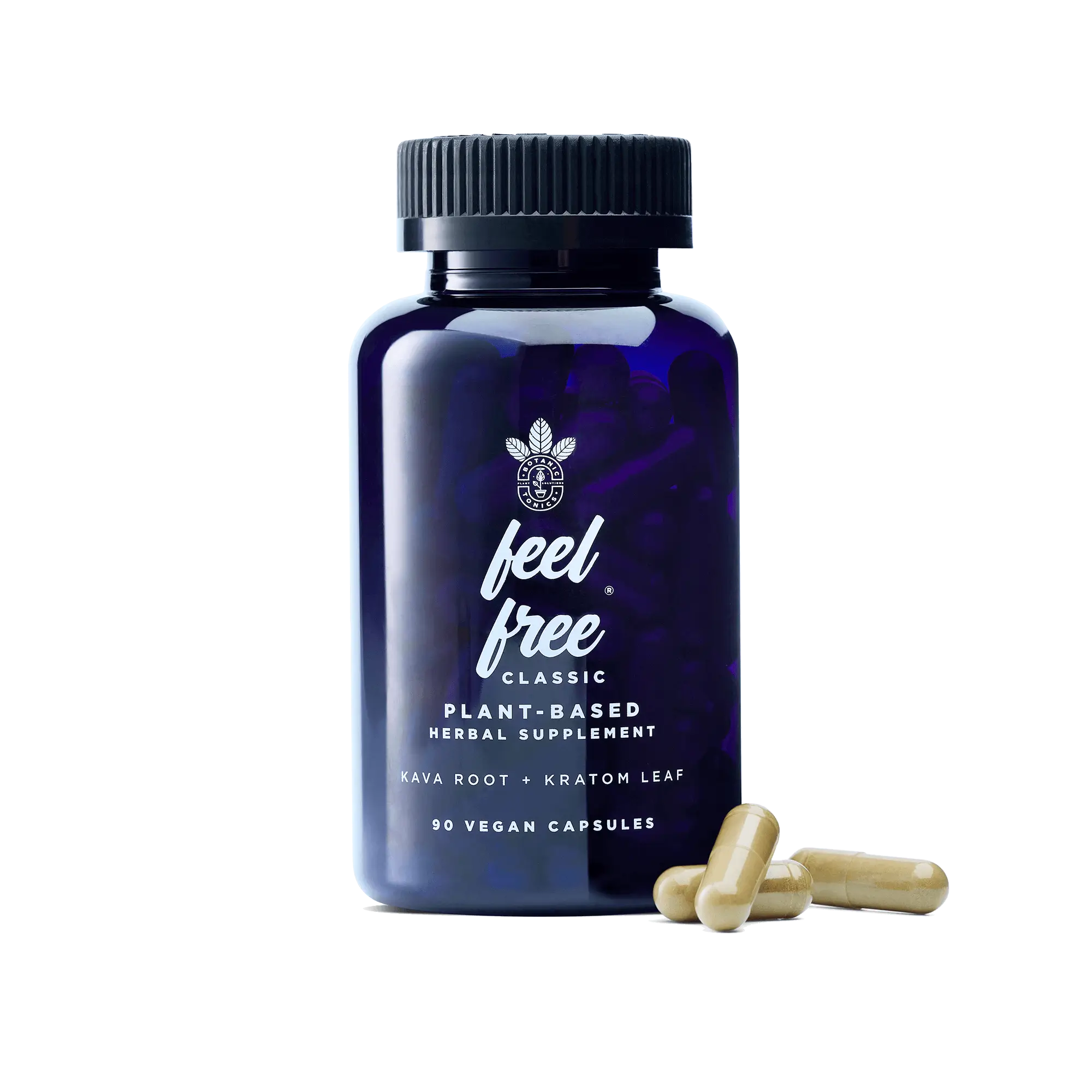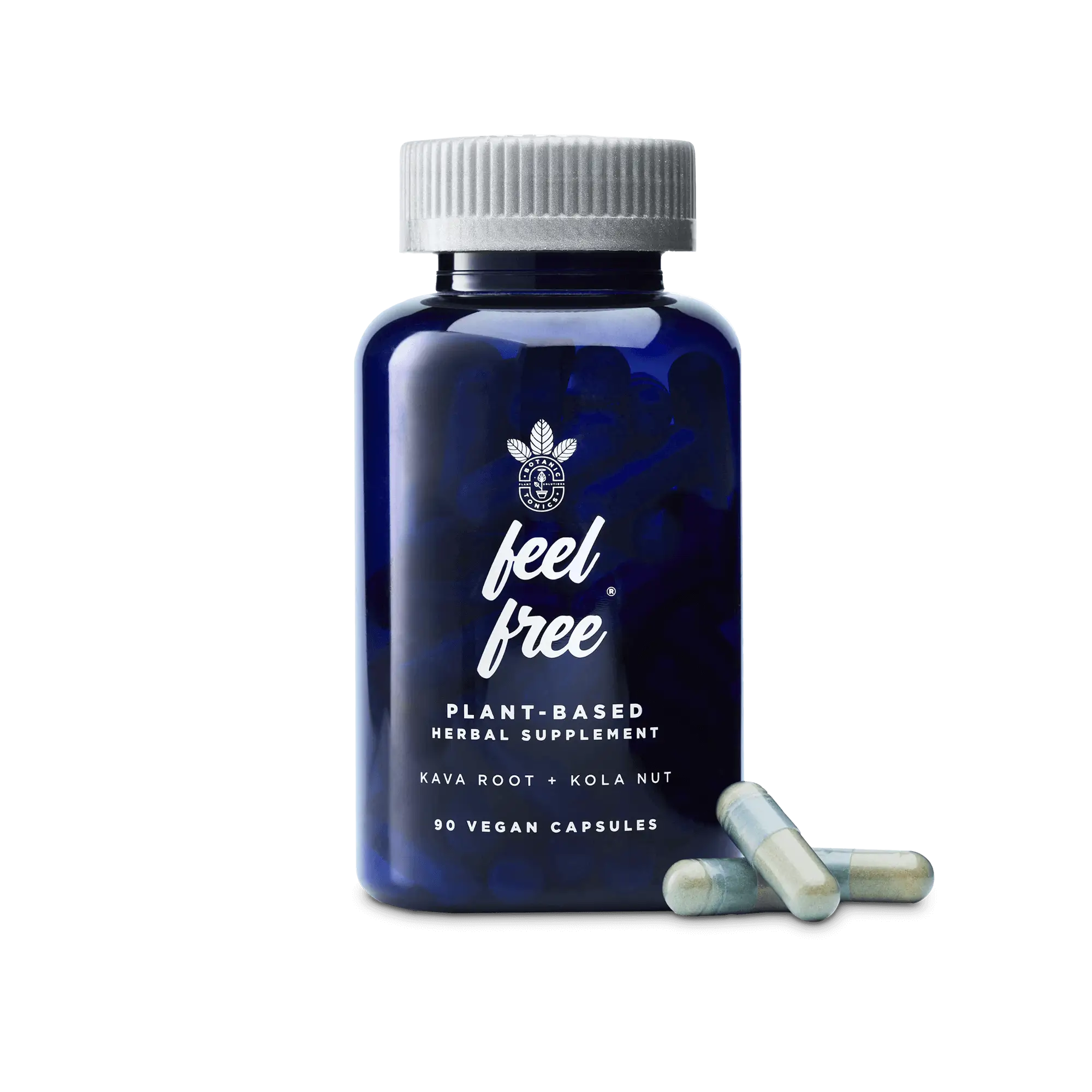Life can be stressful, and many people are looking for natural ways to unwind and feel more at ease. Two popular options for occasional stress relief are kava and kratom. While both come from plants and are known for their calming effects, they work differently and come with their own benefits, risks, and legal considerations. If you’re curious about which one might be a better fit for your needs, here’s a simple breakdown of how they compare.
Understanding Kava: A Natural Way to Relax

Kava comes from the root of the Piper methysticum plant and has been used for generations in the South Pacific to promote relaxation and social bonding. It’s known for creating a calming effect without making you feel foggy or tired. The active ingredients, called kavalactones, work in the brain to help you feel relaxed but still clear-headed.[1] Our feel free CLASSIC tonic uses kava to naturally ease stress while keeping you focused and energized. It’s a great option for anyone who wants to chill out without feeling sleepy.
What to Know About Kratom

Kratom, from the Mitragyna speciosa tree in Southeast Asia, has a more complicated effect on the body. Depending on how much you have, it can either give you an energy boost or help you unwind. Traditionally, laborers chewed kratom leaves to stay energized and beat fatigue. Kratom’s active ingredients, mitragynine and 7-hydroxymitragynine, are known to lift your mood, increase focus, and give you energy.[2] Unfortunately, due to certain misconceptions regarding kratom’s effects along with numerous products on the market which have extracted its active compounds and enhanced their strength, kratom has been restricted in some countries and states due to the risk of dependency and side effects like nausea and dizziness.[3] With that being said, kratom, when consumed responsibly in its most natural leaf format is a safe energy alternative that has proven beneficial for many consumers.
Kava vs. Kratom: Key Differences
Here’s a simple way to look at how kava and kratom differ:
- Calm vs. Energy: Kava helps you feel relaxed and less anxious without making you sleepy, perfect for when you want to stay clear-headed.[1] Kratom, on the other hand, can be energizing or calming based on the serving size, which gives it more versatility. We recommend to only enjoy kratom in small amounts, which will leave you experiencing more of it’s energizing effects..[2]
- Legal Status: Kava is legal and easy to find in most places, while kratom is restricted in some regions due to concerns about its opioid-like effects.[3] See our blog on kratom legality here.
- Safety: Kratom has a more controversial reputation because it can be habit-forming when over consumed and may cause side effects like dizziness, nausea, or even withdrawal symptoms. The FDA has issued warnings about kratom, stressing the need for further research.[3] At Botanic Tonics, transparency and safety are our top priority. When creating feel free we wanted to be sure to only include leaf kratom in its most natural form and therefore only use a small amount of ground leaf. Additionally, one serving of our tonic, which is half a bottle, contains less than 0.05mg of the active 7-OH compound which is naturally occuring in the kratom leaf.
If you’re looking for a way to reduce occasional stress and feel more balanced without feeling groggy, our feel free CLASSIC tonic could be a great option. It combines kava root with leaf kratom to give you relaxed, steady energy that fits seamlessly into your daily routine.
Our Role at Botanic Tonics

At Botanic Tonics, we focus on creating products that harness the benefits of natural botanicals while ensuring top-notch quality and safety. Always talk to a healthcare professional before trying a kava tonic. Understanding the unique effects and risks of both kava and kratom will help you make the best choice for you. Whether you’re after calm focus or a way to de-stress, there’s a natural solution out there that might be just right for you.
Sources:
- Alcohol and Drug Foundation: Kava
- NIDA: Kratom
- News Medical: Kratom: A dangerous or beneficial plant?
















